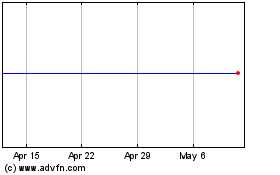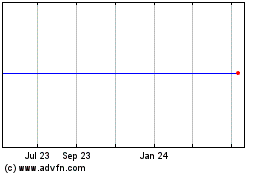By Louise Radnofsky and Stephanie Armour
WASHINGTON -- The first handful of states have released approved
2017 rates for people who buy health insurance on their own and the
results so far are consistent with what many expected: There are
significant increases in premiums for next year.
The Obama administration, seeking to reassure consumers who
could be concerned by increases in more states in the coming weeks,
released an analysis showing financial help from the government
could soften the blow for people who qualified.
Some insurance regulators have begun announcing their approval
of rate increases, including an average jump of 62% for the biggest
plan in Tennessee and increases of around 43% in Mississippi and
23% in Kentucky for large carriers.
The Department of Health and Human Services said in an analysis
issued on Wednesday that tax credits available to some lower- and
middle-income Americans, which are pegged to the cost of insurance
in a particular area, would blunt the impact and ensure that around
three-quarters of the people who obtained insurance through
HealthCare.gov would pay less than $75 a month for coverage.
"Headline rate increases do not reflect what consumers actually
pay," said Kathryn Martin, acting assistant secretary for planning
and evaluation at the department, which also said the federal
government was still on track to spend less on the law than
originally forecast by the Congressional Budget Office.
Health plans, stung by large losses in the rocky early years of
implementation of the 2010 health law, say they need to raise
prices substantially to keep their offerings afloat. Federal
officials say some increases reflect the planned end of provisions
in the law designed to cushion insurers. They say other shifts are
predictable as plans adjust to the law's overhaul of insurance
pricing to require it to be sold equally to all customers
regardless of medical history or risk.
But some state regulators say they are facing an unusually
difficult scenario in which they had to choose between agreeing to
the price increases or seeing the plans withdrawn from some markets
entirely, as large insurers Aetna Inc. and UnitedHealthcare have
begun doing.
In Tennessee, the state insurance commissioner approved a 62%
average rate increase for individual plans sold by BlueCross
BlueShield of Tennessee, the market leader. The state approved a
46.3% increase for Cigna Corp. and 44.3% jump for Humana Inc.
Tennessee Commissioner Julie Mix McPeak said she had allowed
Cigna and Humana to refile their 2017 proposals to seek higher
rates, something she didn't allow last year. "Two of the three
health plans said they'd like to refile rates or they'd have to
leave," she said. "We were very concerned it would be a domino
effect. This year I felt I didn't have much of a choice."
She said actuaries reviewed the rate-increase requests for 2017
and found they were justified. Insurers early in the launch of
HealthCare.gov had priced premiums relatively low but had hefty
claim costs. Ms. McPeak said it was unclear whether the costs are
being driven by consumers who are sicker and have higher expenses
than expected, or because consumers getting insured are using more
health services.
"The rates are terrible for our consumers," she said. "The rates
are increasing drastically. The problem in Tennessee is we had
extremely high claims costs and low premiums to begin with."
The Department of Health and Human Services modeled a
hypothetical scenario, it said, in which all rates increased by an
average of 25% across the country.
Final rates will trickle out of the states and federal
government over the next few months ahead of a Nov. 1 date for the
new sign-up window. Around 9.6 million people signed up for
coverage through HealthCare.gov during the main enrollment period
last year, the federal government has said.
Estimates vary for how many people get individual coverage
without using the site or a state equivalent, but the figure likely
numbers several million. The health law's pricing rules apply to
almost all individual health plans, regardless of whether they are
sold through HealthCare.gov or independently.
Full premiums are borne by people who don't use the site, as
well as all people with incomes above four times the poverty line,
or $47,520 for a single person. The value of tax credits is on a
sliding scale in which they eventually peter out.
The Obama administration and insurers are still trying to expand
the number of enrollees in HealthCare.gov and state equivalents in
a bid to turn the tide.
Higher rates typically push down enrollment, especially among
people who don't feel they badly need health care, which can lead
to a cycle of falling enrollment and rate increases.
Many insurers have said they need a larger and more mixed group
of enrollees than they currently have in many places to ensure that
the health law's markets stabilize.
"We've got to get a balanced risk pool, which means we need more
healthy people," said Patrick Getzen, chief actuary of Blue Cross
and Blue Shield of North Carolina, which has said it requested an
18.8% increase for its individual plans for next year after seeing
rising costs that led to sharply increased losses on Affordable
Care Act plans in 2015. The insurer said it has yet to resolve
final 2017 rates with North Carolina's regulator.
In Kentucky, Anthem Inc. sought and won an increase of 22.9%.
Humana asked for 33.7% and was granted 31%, the insurance
regulator's office said.
In Mississippi, Humana has been approved for a 43% increase,
said insurance commissioner Mike Chaney. In Virginia, Anthem has
been granted its request for a 15.8% increase.
Georgia's insurance agency said it had signed off on rates
including a 21.4% increase for Blue Cross Blue Shield of
Georgia.
--Anna Wilde Mathews contributed to this article.
Write to Louise Radnofsky at louise.radnofsky@wsj.com and
Stephanie Armour at stephanie.armour@wsj.com
(END) Dow Jones Newswires
August 24, 2016 19:01 ET (23:01 GMT)
Copyright (c) 2016 Dow Jones & Company, Inc.
Anthem (NYSE:ANTM)
Historical Stock Chart
From Mar 2024 to Apr 2024

Anthem (NYSE:ANTM)
Historical Stock Chart
From Apr 2023 to Apr 2024
